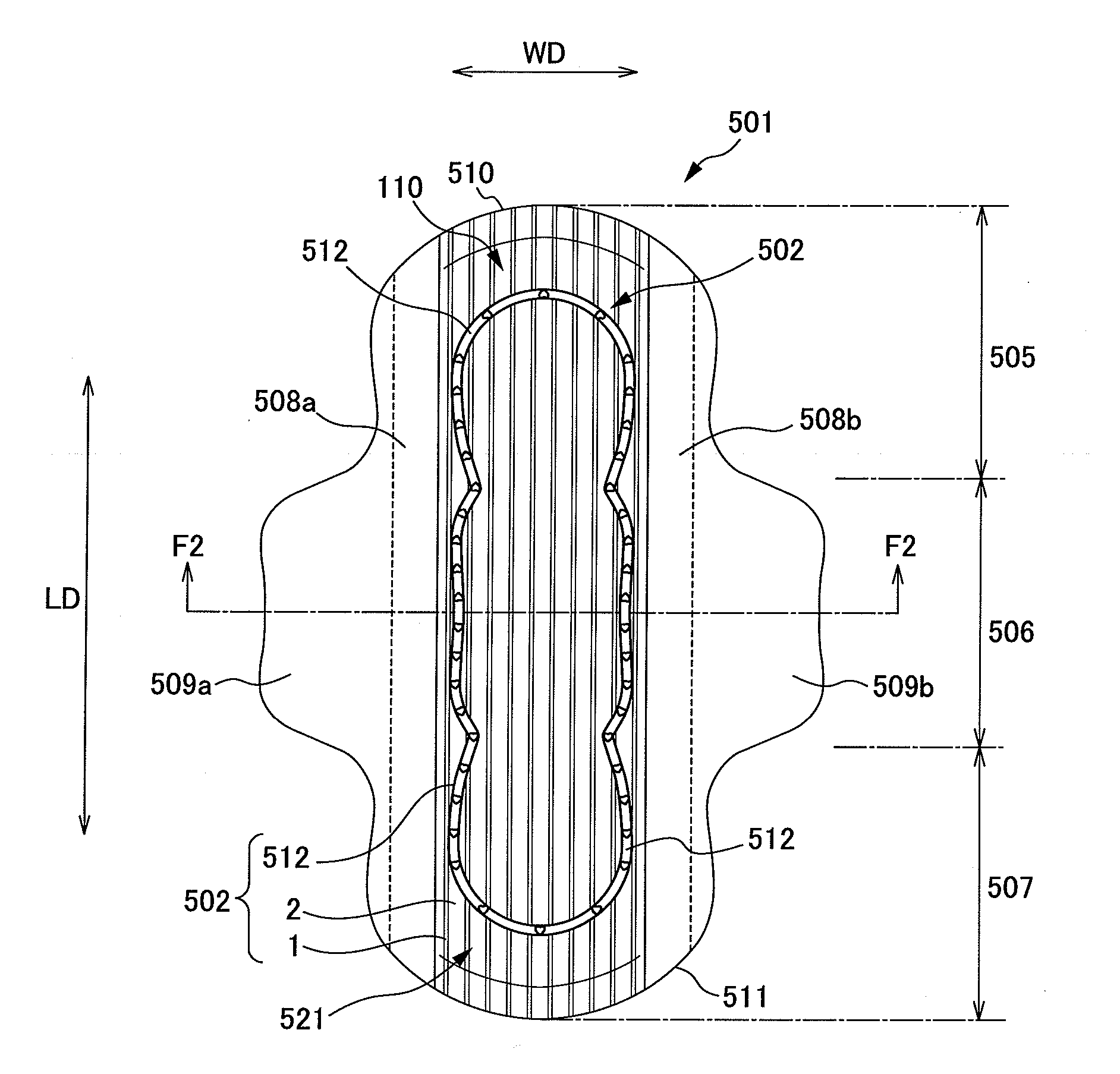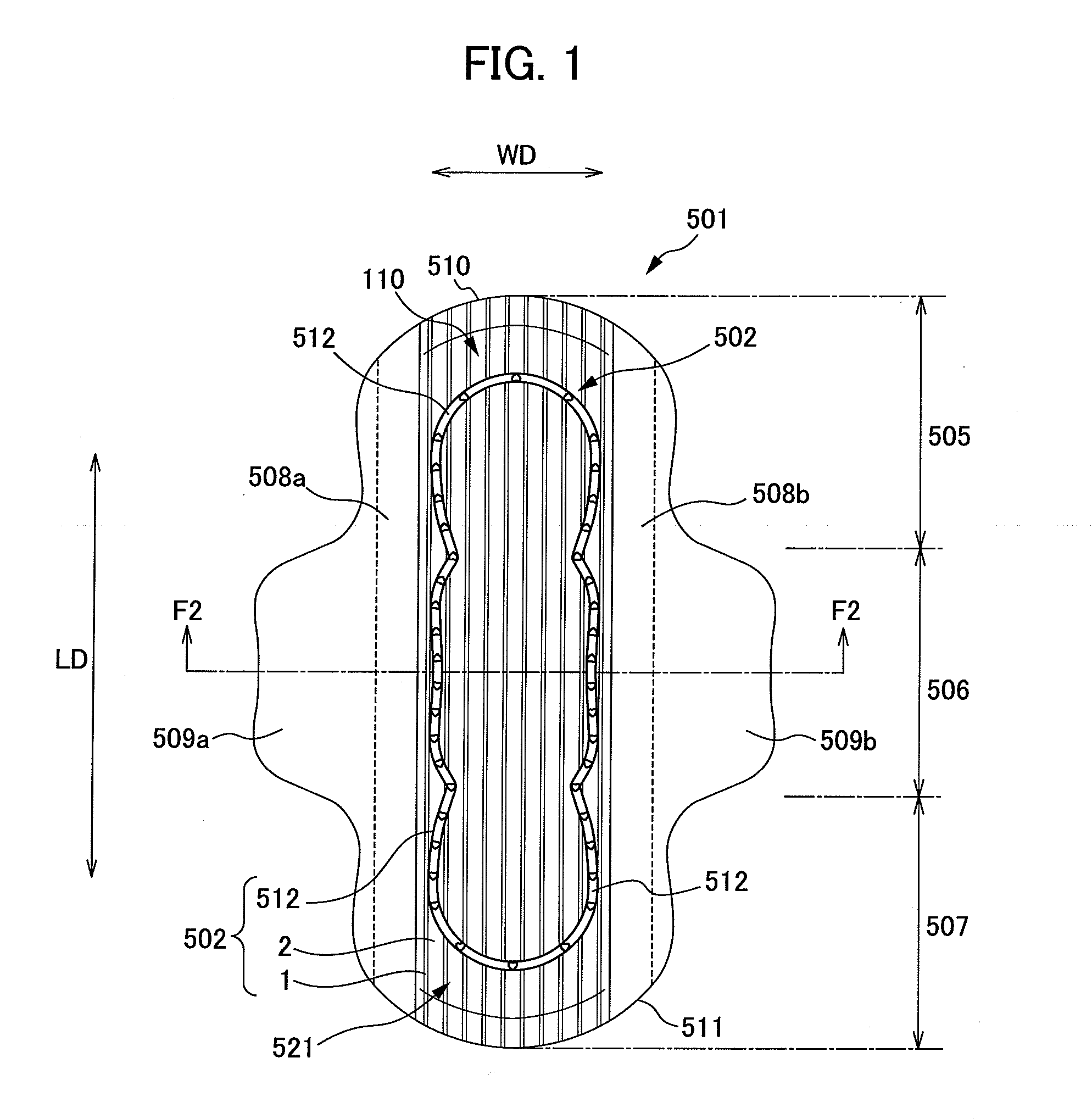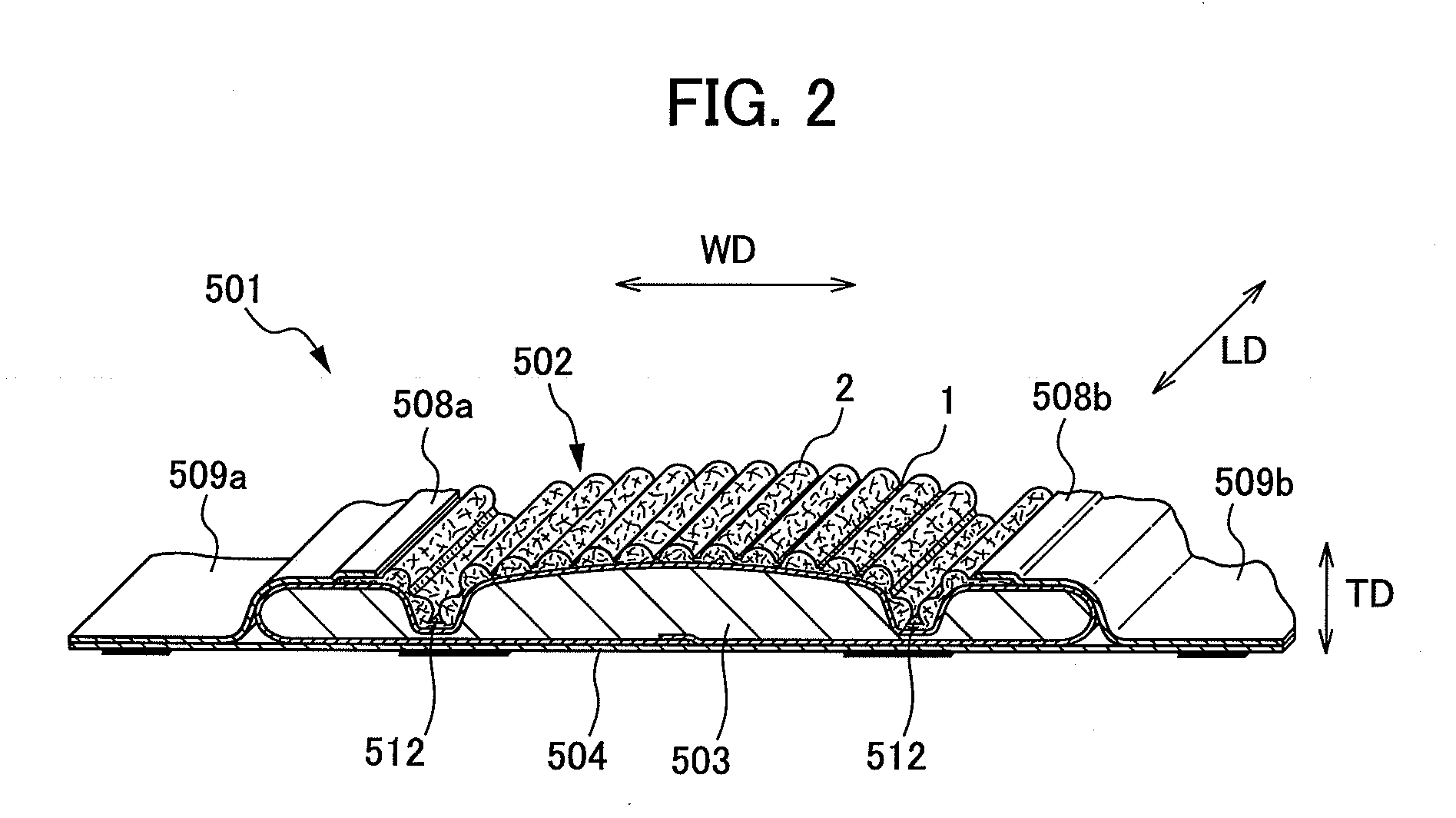Absorbent article
a technology of absorbent articles and articles, applied in the field of absorbent articles, can solve the problems of menstrual blood leakage to the first fibrous layer surface of the surrounding concave portions, the orientation or the arrangement of the fibers in the fibrous layer, and the shape of the fibrous layer, so as to improve the performance of liquid infiltration and liquid return suppression, and facilitate permeation.
- Summary
- Abstract
- Description
- Claims
- Application Information
AI Technical Summary
Benefits of technology
Problems solved by technology
Method used
Image
Examples
first embodiment
1. First Embodiment
[0039] A sanitary napkin will now be used as an example to explain an absorbent article according to the present invention. FIG. 1 is a plan view of a sanitary napkin according to a first embodiment of the present invention. FIG. 2 is a sectional view along line F2-F2 as described in FIG. 1.
1-1. General Description
[0040] As shown in FIGS. 1 and 2, a sanitary napkin 501 as an absorbent article is provided with a liquid-permeable top sheet member 502; a liquid-impermeable back sheet member 504; and an absorbent body member 503 disposed between the top sheet member 502 and the back sheet member 504. In the longitudinal direction LD, the sanitary napkin 501 has a central portion 506 that includes an area that contacts makes contact with excretion organ; a front portion 505 that includes an area that makes contact with an anterior part of the body; and a back portion 507 that includes an area that makes contact with a posterior part of the body.
[0041] The sanitary ...
second embodiment
2. Second Embodiment
2-1. General Description
[0108] The general shape is a sanitary napkin that is the same as the first embodiment. Therefore, an explanation thereof will be omitted. (See section 1-1. General Description)
2-2. Top Sheet Member
[0109]FIG. 9 is a plan view showing a first surface 521 of nonwoven fabric according to the second embodiment, as used in a top sheet member 502 in the sanitary napkin as described in FIG. 1. FIG. 10 is a plan view of a second surface 522 opposite to the first surface 521 as described in FIG. 9. FIG. 11 is an expanded perspective view of a part showing a configuration of nonwoven fiber corresponding to the area demarcated with Y in FIG. 9. Suitably, the following will now explain FIGS. 9 to 11 with reference to FIGS. 1 and 2.
[0110] The top sheet member 502 is composed of the liquid-permeable nonwoven fabric 120 formed with gaps between fibers internally. Compared to the nonwoven fabric 110 described with the first embodiment above, the con...
third embodiment
4. Third Embodiment
[0163]FIG. 14 is a composition drawing showing a disposable diaper as an absorbent article according to the present invention. A nonwoven fabric 302 that is the same as the nonwoven fabric 110 of the first embodiment is used as the top sheet of a disposable diaper 601 as the third embodiment in the absorbent member 602. The same nonwoven fabric as others or the nonwoven fabric 120 of the second embodiment can be used in the nonwoven fabric 302. Furthermore, the disposable diapers 601 can be expected to have the same actions and effects as the articles described above.
[0164] As explained above, according to the present invention, nonwoven fabric used as a top sheet (the surface sheet) and having concavity and convexity significantly improve liquid infiltration performance and liquid return suppression performance, provide high strength and do not worsen the feeling against the skin. This makes it possible to provide an absorbent article that can respond to high pe...
PUM
| Property | Measurement | Unit |
|---|---|---|
| thickness | aaaaa | aaaaa |
| thickness | aaaaa | aaaaa |
| lengths | aaaaa | aaaaa |
Abstract
Description
Claims
Application Information
 Login to View More
Login to View More - R&D
- Intellectual Property
- Life Sciences
- Materials
- Tech Scout
- Unparalleled Data Quality
- Higher Quality Content
- 60% Fewer Hallucinations
Browse by: Latest US Patents, China's latest patents, Technical Efficacy Thesaurus, Application Domain, Technology Topic, Popular Technical Reports.
© 2025 PatSnap. All rights reserved.Legal|Privacy policy|Modern Slavery Act Transparency Statement|Sitemap|About US| Contact US: help@patsnap.com



